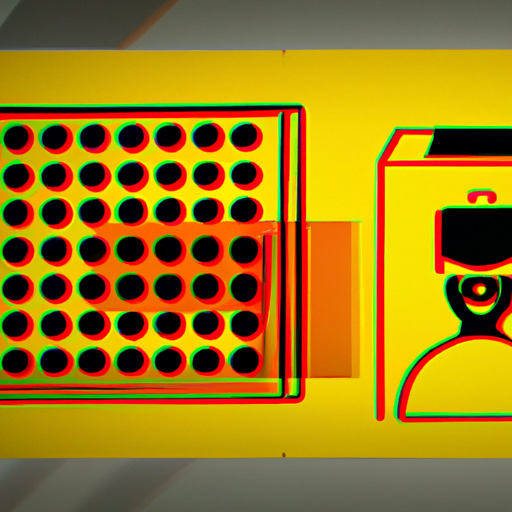
-
Table of Contents
- Designing for Augmented Reality (AR) Interfaces
- The Unique Challenges of AR Interface Design
- Design Principles for AR Interfaces
- 1. Contextual Awareness
- 2. Minimalism and Simplicity
- 3. Spatial Mapping
- 4. User Guidance and Feedback
- 5. User Testing and Iteration
- Case Studies and Examples
- 1. IKEA Place
- 2. Snapchat Filters
- 3. Google Maps Live View
- Summary
Designing for Augmented Reality (AR) Interfaces

Augmented Reality (AR) is a technology that overlays digital information onto the real world, enhancing our perception and interaction with the environment. With the rapid advancement of AR technology, designing effective and user-friendly AR interfaces has become crucial. In this article, we will explore the key principles and best practices for designing AR interfaces, backed by research, examples, and case studies.
The Unique Challenges of AR Interface Design
Designing for AR interfaces presents unique challenges compared to traditional user interfaces. Here are some key considerations:
- Contextual Integration: AR interfaces need to seamlessly integrate with the user’s physical environment. The design should consider the spatial context, lighting conditions, and real-world objects.
- Information Hierarchy: AR interfaces often present a large amount of information. Designers must carefully prioritize and present information in a way that is easily digestible and non-intrusive.
- Interaction Paradigms: AR interfaces offer new interaction paradigms, such as gesture-based controls or voice commands. Designers must consider the intuitiveness and learnability of these interactions.
- Visual Clutter: Overloading the user’s field of view with too much information can lead to visual clutter and cognitive overload. Designers must strike a balance between providing relevant information and maintaining a clear view of the real world.
Design Principles for AR Interfaces
When designing AR interfaces, it is essential to follow certain design principles to ensure a seamless and intuitive user experience. Let’s explore some of these principles:
1. Contextual Awareness
AR interfaces should be aware of the user’s context and adapt accordingly. For example, if a user is in a dimly lit room, the interface should adjust the brightness and contrast of the displayed information to ensure readability. Contextual awareness can be achieved through sensors, such as ambient light sensors or depth cameras, which provide real-time information about the environment.
2. Minimalism and Simplicity
Given the limited screen real estate in AR interfaces, it is crucial to adopt a minimalist approach. Avoid overwhelming the user with excessive information or complex visual elements. Instead, focus on presenting only the most relevant and essential information. Use clear and concise visuals, icons, and text to convey information effectively.
3. Spatial Mapping
AR interfaces should take advantage of spatial mapping to understand the user’s environment and provide contextually relevant information. Spatial mapping involves creating a digital representation of the physical space, allowing the interface to interact with and respond to the real world. For example, an AR navigation app can use spatial mapping to display arrows or directions overlaid onto the user’s surroundings.
4. User Guidance and Feedback
AR interfaces should provide clear guidance and feedback to users to help them understand how to interact with the system. Use visual cues, animations, or audio feedback to indicate successful interactions or provide instructions. For example, when a user successfully places a virtual object in the real world, the interface can provide visual feedback, such as a subtle animation or sound effect.
5. User Testing and Iteration
As with any design process, user testing is crucial for AR interfaces. Conduct usability tests with real users to gather feedback and identify areas for improvement. Iterate on the design based on user feedback to create a more intuitive and user-friendly experience. User testing can help uncover usability issues, understand user preferences, and validate design decisions.
Case Studies and Examples
Let’s explore some real-world examples and case studies that demonstrate effective AR interface design:
1. IKEA Place
IKEA Place is an AR app that allows users to virtually place furniture in their homes. The app uses AR technology to accurately scale and position virtual furniture in the real world. The interface provides intuitive gestures for rotating, moving, and resizing the furniture. IKEA Place demonstrates the importance of spatial mapping and user guidance in AR interfaces, enabling users to visualize how furniture will look and fit in their space.
2. Snapchat Filters
Snapchat’s AR filters overlay virtual elements, such as masks or effects, onto users’ faces in real-time. The filters adapt to the user’s facial movements and expressions, creating an interactive and engaging experience. Snapchat’s AR filters showcase the power of real-time tracking and user feedback in AR interfaces, providing a fun and immersive user experience.
3. Google Maps Live View
Google Maps Live View uses AR to provide real-time navigation guidance by overlaying arrows and directions onto the user’s surroundings. The interface leverages spatial mapping and contextual awareness to guide users accurately. Google Maps Live View demonstrates the importance of minimalism and simplicity in AR interfaces, presenting only the most relevant information to avoid visual clutter.
Summary
Designing for AR interfaces requires careful consideration of the unique challenges and principles specific to this technology. Contextual integration, information hierarchy, interaction paradigms, and visual clutter are key factors to address. By following design principles such as contextual awareness, minimalism, spatial mapping, user guidance, and feedback, designers can create intuitive and user-friendly AR interfaces. Real-world examples like IKEA Place, Snapchat Filters, and Google Maps Live View demonstrate the successful application of these principles. As AR technology continues to evolve, designers must stay informed and adapt their approaches to create compelling and immersive AR experiences.
